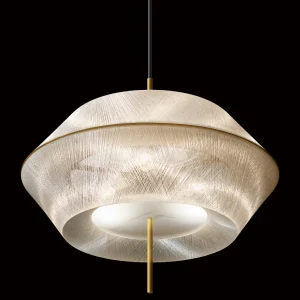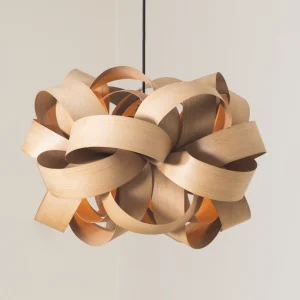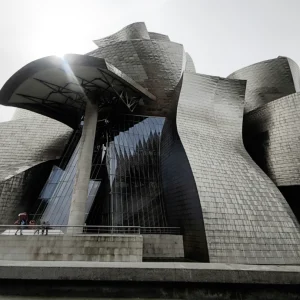Words By Emily Martin
Images By Nicholas Worley
Project Info
Architect LOM Architecture and Design
Client Natwest Group
Size 23,900m2
Completion November 2021
LOM ARCHITECTURE AND DESIGN has transformed a 20-year-old desk-centric building into an engaging and social head office for its client Natwest Group. Located at 250 Bishopsgate, a City of London landmark originally designed by EPR in 1998, the site was chosen as the bank’s future head office when Natwest streamlined its London office portfolio to two buildings.
The major retrofit set out to radically improve space, facilities and sustainability at the 11-storey glass and steel building. The project includes a new 300-seat conference centre on the ground floor, a new bank branch, meeting galleries, co-working floor, atrium garden, cafe and board facilities, together with the transformation of workspace throughout the building.

LOM’s design showcases layouts based on movement, light and biophilic design
The design includes a creation of a flexible co-working floor, which replaces an old third-floor meeting centre and has been designed around human interaction, activity and views.
The cafe kitchens support open-plan working and socialising, with a mix of desks and quiet corner workspaces enhanced by biophilia and neutral colours.
 The practice developed a colour palette ranging from deep to light and natural shades, to fresh and earth tones
The practice developed a colour palette ranging from deep to light and natural shades, to fresh and earth tones
The workspace refresh across the remaining nine floors adopted a reuse-first approach to upcycle and rethink furniture and interiors, with a strong focus on flexible functionality, social space, and creating communities. Ceilings, storage, desks and chairs were repurposed to create a completely new working environment. Recycled desktops, mobile furniture and moveable walls are used to create adaptable ‘Flexi Zones’ for teamwork, collaboration and events.
A previously inaccessible ninth-floor roof terrace has been converted into a spacious and usable amenity roof garden – a peaceful oasis with mixed plants and fruit trees with striking views across the city. Alongside its very own herb garden, a plant-to-plate EvoGro system has been implemented to grow seed to produce within just seven days, providing fresh produce on-site with zero pesticides. Right down at basement level is the ‘Cycle Shed’: a fully equipped space with maintenance facilities, changing, showers and cycle storage now bringing new purpose to the former car park.
 Environments are tuned to users’ daily needs, such as with the use of playful graphics and wayfinding
Environments are tuned to users’ daily needs, such as with the use of playful graphics and wayfinding
A fully equipped conference centre has been created, within the old ground-level dealer floor, making better use of deep plan space, while the new public entrance enabled an agile and self-contained events facility for the bank and third-party users. A crisp black gallery of meeting rooms in a stepped form have been built in the existing reception atrium, alongside a new bridge structure that spans between stairs over the reception. Natwest wanted to introduce high-quality visitor spaces, with a client meeting suite, and to that end LOM has introduced a series of spaces dressed with artwork and artefacts taken from the bank’s collections.
The practice developed a theme of ‘dawn, day and dusk’ and a colour palette ranging from deep to light and natural shades, to fresh and earth tones. Each zone, such as workplace areas, communal spaces, meeting rooms and pods, are defined by one of these themes, in addition to the ‘Green Zone’, which covers the conservatory, weather garden and garden cafe.
 The fully equipped conference centre
The fully equipped conference centre
With the overriding objective of moving towards a more flexible and future-proof workspace, LOM’s design showcases a transformative co-working space, with fluid layouts based on movement, light and biophilic design. Across the building, flexible and engaging interior environments are tuned to users’ daily needs, activities and comfort.
This includes playful graphics, wayfinding, and glass manifestations.
John Avery, director at LOM Architecture and Design, comments: ‘At 250 Bishopsgate, our retrofit of a landmark City of London building has turned traditional corporate design on its head, and extended the life of a building that is now more flexible and sustainable. We focused on fluid layouts that facilitate collaboration and promote well-being, while providing additional space within the existing structure without compromising users’ experience and well-being.’
Key Suppliers
Furniture
The Senator Group www.thesenatorgroup.com
Boss Design www.bossdesign.com
Brunner www.brunner-uk.com
Frem Group www.frem.co.uk
Johanson Design www.johansondesign.com
New Design Group www.newdesigngroup.co.uk
Surfaces
Milliken www.milliken.com
Interface www.interface.com
Ege Carpets www.egecarpets.com
Forbo www.forbo.com
Havwoods www.havwoods.com
Autex UK www.autexaccoustics.com
Domus Tiles www.domusgroup.com
Fenix www.fenixforinteriors.com
Troldtekt www.troldtekt.co.uk
Kvadrat www.kvadrat.dk
Lighting
TwentyTwentyOne www.twentytwentyone.com
Flos www.flos.com
Resident Co www.resident.co.nz
Tala www.tala.co.uk
Rosie Li www.rosieli.com
Moooi www.moooi.com
&Tradition www.andtradition.com
Atelier Areti www.atelierareti.co





